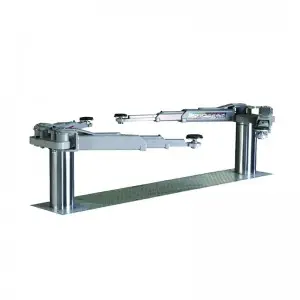Cylinders are one of the most versatile and commonly used shapes in the world of mathematics, engineering, and design. Defined as a three-dimensional shape with two parallel circular bases connected by a curved surface, cylinders offer a multitude of applications and benefits. In this article, we will delve into the world of cylinders, exploring their properties, uses, and significance in various fields.
One of the key characteristics of a cylinder is its curved surface, which creates a seamless transition between the two circular bases. This shape is not only aesthetically pleasing but also offers structural stability and strength. Cylinders are found in a wide range of everyday objects, from cans and bottles to pipes and engine blocks. The shape’s ability to distribute stress evenly across its surface makes it an ideal choice for containing liquids, gases, and other materials.

Unleashing the Power of Cylinders: A Guide to Understanding and Working with This Versatile Shape
In mathematics, cylinders play a crucial role in geometry and calculus. The formula for calculating the volume of a cylinder is V = πr^2h, where r is the radius of the base and h is the height of the cylinder. This formula allows mathematicians and scientists to determine the capacity of cylindrical containers, such as tanks, reservoirs, and silos. The surface area of a cylinder can be calculated using the formula A = 2πrh + 2πr^2, providing valuable information for designing and analyzing cylindrical structures.
Engineers and designers also rely on cylinders for a wide range of applications. In mechanical engineering, cylinders are commonly used in hydraulic systems, where they convert fluid pressure into mechanical motion. Hydraulic cylinders are crucial components in heavy machinery, construction equipment, and automotive vehicles. Their ability to generate linear force and motion makes them indispensable in various industrial applications.
The aerospace industry also makes extensive use of cylinders in aircraft design. From the fuselage to the engine components, cylinders are essential for maintaining structural integrity, reducing drag, and optimizing aerodynamics. Cylindrical fuel tanks are strategically positioned within the aircraft to maximize storage capacity while minimizing weight and space constraints. The precise engineering and integration of cylinders play a vital role in ensuring the safety and efficiency of modern aircraft.

Unleashing the Power of Cylinders: A Guide to Understanding and Working with This Versatile Shape
Beyond their technical applications, cylinders have also inspired artists, architects, and designers throughout history. The iconic shape of the Parthenon in Athens, Greece, is a testament to the enduring beauty and elegance of cylindrical forms. From ancient sculptures to contemporary skyscrapers, cylinders continue to captivate and inspire us with their simplicity and grace.

Unleashing the Power of Cylinders: A Guide to Understanding and Working with This Versatile Shape
In conclusion, cylinders are more than just geometric shapes; they are symbols of innovation, efficiency, and elegance. With their versatile properties and practical applications, cylinders have become indispensable in various fields, from mathematics and engineering to design and architecture. By understanding and harnessing the power of cylinders, we can unlock a world of possibilities and creativity. Next time you encounter a cylinder, take a moment to appreciate its unique beauty and significance in our modern world.Cylinder
